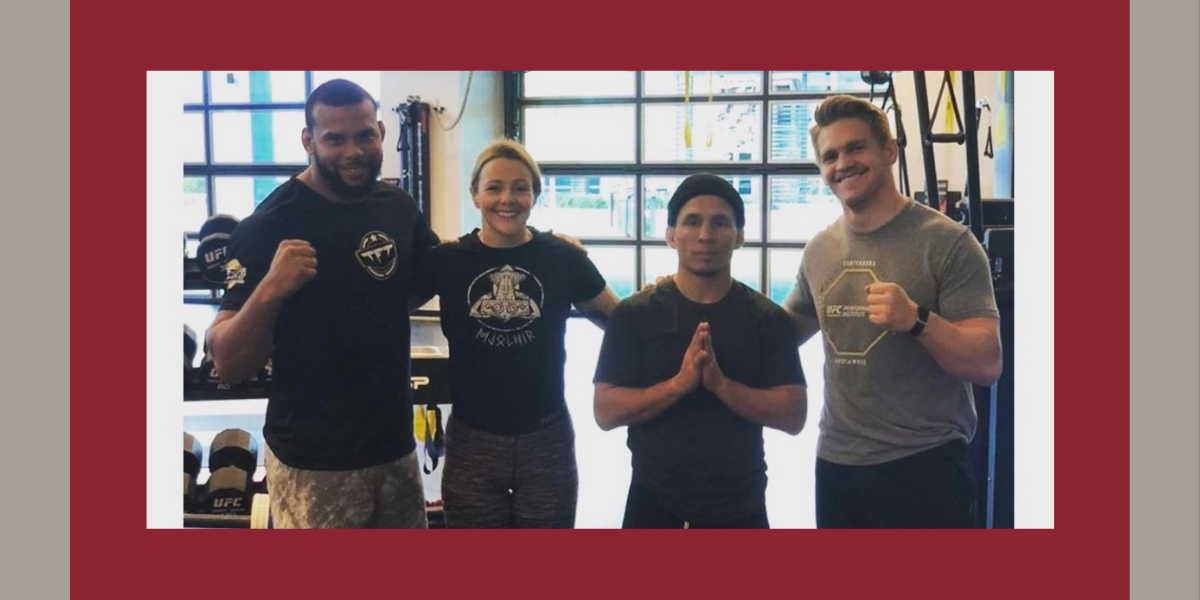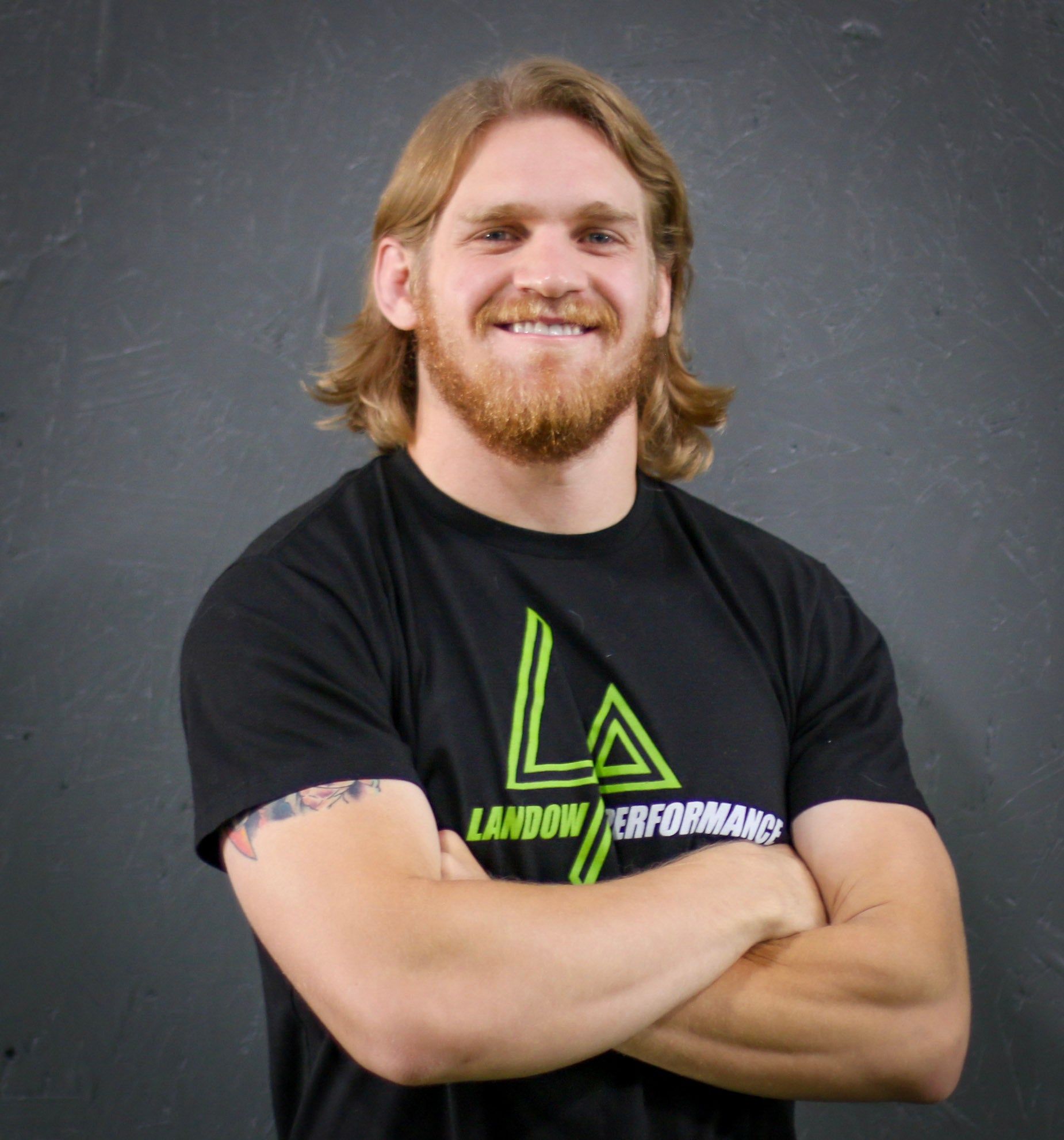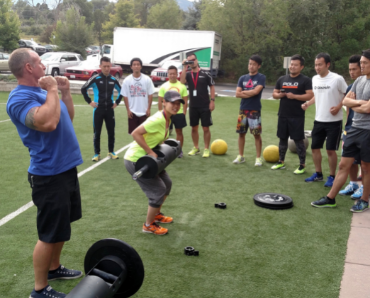Top 6 Qualities of a Successful Strength and Conditioning Coach

Athletes and coaches call us by many different titles:
Trainer, Coach, S&C specialist, Personal Trainer, Strength Guy, Performance Coach, Physio Expert, Strength and Conditioner…
But what does it actually take to be a successful strength and conditioning coach?
Logically speaking, a strength and conditioning coach (which I’ll sometimes refer to as an S&C coach or a strength coach) oversees strength and conditioning, right? Right, but that’s not the full extent of the job. Not by a long shot.
A strength and conditioning coach has two major responsibilities:
- Reduce the risk of injury.
- Improve athletic performance.
However, strength coaches can also be expected to do the following:
- carry on the vision of the team culture (as exemplified by the head coach)
- meet client’s expectations
- be a moral leader
- act as a nutritionist
- serve each individual athlete
- be a shoulder to cry on
- and much more
These roles necessitate a core set of traits and qualities that go far beyond knowing the X’s and O’s of carrying out the daily operations.
Sure, the technical skills of the job are necessary, however, those are not exclusively the traits that make strength coaches successful. Within my five years of coaching, the standout coaches I have been around have not only been experts in the technical realm of S&C, but even better at the intangibles of the job. And I’m not referring to traits such as “working hard” or having “passion for the field.”
The top six qualities that lead to being a successful strength and conditioning coach are points that influence and build on actual coaching. Interpersonal relationships, self-awareness, leadership, systems-building and creativity are those “intangible” qualities that truly make great strength and conditioning coaches.
Top Qualities of a Successful Strength and Conditioning Coach
1. Know Thyself. (Awareness)
What type of coach are you? What specific skill sets allow you to practice the way that you do? Have you done a Strengths, Weaknesses, Opportunities, Threats (SWOT) analysis for yourself?
Asking yourself these types of questions will help to build self-awareness. Maybe you are not the “Hype-up” guy (or gal), and that’s alright. You must identify your strengths, and then orient yourself toward them. Perhaps your coaching style is more supportive and gentle, which can be successful too. Regardless, you must put in the time and energy to discover what your coaching style is, and ultimately what works best for you.
A great exercise to better understand yourself as a coach is to create a reflective journal. After each session, reflect on how you performed. What did you do well, what would you have changed, what were the motivations, evidence, and experience you relied on for the session? A reflective journal can illuminate a sense of self-awareness that may not have been present before.
Self-awareness can help to align your personality with a coaching style that fit your strengths. This alignment can take your coaching to new heights because it allows you to be more genuine with the athletes you serve. Athletes can typically sense when a coach is full of it. If you’re trying to be someone you’re not, then chances are your athletes are aware.
A third and final aspect of having full self awareness as a S&C coach, includes workplace expectations. Have you communicated with your peers or superior about what is expected from your role? Understanding exactly what your role is will be key to performing it well.
2. Communicate early & often. (Effective Communicator)
Being an effective communicator takes effort. You must put yourself in a position to be heard, and also receive feedback with grace. Reaching out and making connections with other coaches and with athletes is essential to do your job well. Communication within strength and conditioning can be broken down into two categories: Communicating in preparation and communicating in session.
Communication in preparation is like gathering intel on how an athlete carries out their performance. (A small bit of espionage may be required.)
Some important things to consider might be:
- What does their skills coach see? What is their training load?
- How often and why are they in the training room?
- Are they seeing a PT (Physical Therapist)?
A strength and conditioning coach, for better or worse, often becomes the glue among many of the key support staff. So how can you create a collaborative performance team to enhance everyone’s service to the athlete? Reach out, listen, and adapt.
Communication in session is all about listening and being listened to. You must genuinely listen to an athlete’s input and be willing to adapt. Part of this includes creating an environment in which the athletes actually want to listen to you. Taking an extra 2-3 minutes to explain the “why” behind the program is great, but if athletes don’t care, it will only be wasted time.
The best way to gain an athlete’s attention during those “why” speeches is to first genuinely listen to them and their concerns. The same is true as you collaborate with other coaches. Listen to their why and keep an open mind. Maintaining an openness to new ideas and seeking out new information is key to finding success within your coaching context.
3. “Be Water, My Friend” (Adaptability)
The role of a S&C coach involves some improvisation. The situation is often dynamic, and there are a lot of game-time decisions. In any given session, you must make theoretical decisions, practical decisions, safety decisions, and individualized decisions. Making these decisions takes experience and practice to get it right.
Just like good improv, a lot of training can help coaches become better at adapting. Adapting, pivoting, and remaining flexible are irreplaceable skills in the strength and conditioning industry. The decision-making piece must be quick, accurate, and effective. This takes preparation: Remembering a previous close call, preparing ahead of time to use an upper-body-only program when your athlete inevitably comes in with an unannounced ankle sprain. Prepare a communication approach for when a disagreement comes up between you and the team’s PT. Do your best to understand where your athletes are coming from.
A good coach may cancel a session if an athlete is injured. A great coach will analyze the injury to make the best decision, and create value for the athlete. Like being a good communicator, you must be open to athlete feedback to adapt accordingly.
Beyond the acute training session, a great S&C coach must stay open to new learning opportunities and be ever evolving. As stated above, collaboration is near impossible if a coach is unwilling to be flexible. Many different methods are effective in Strength and Conditioning, which is why it’s important to avoid sticking to only one.
4. Take Pride in Your Work. (Accountability and Ownership)
“Own it!”
This is your session. It’s your program and your system. It’s your exercise demonstration, so do your best. Too often, we see coaches simply go through the motions during a training session, likely due to a lack of confidence, poor communication, or flat-out apathy.
You are representing yourself and your organization, and your athlete deserves more. Be prepared for your sessions, and offer a well-thought-out organized program. It’s typically not a good idea to “wing it.” (Nor do I recommend that you wing it and claim you are “adapting.”)
Maintain a clear perspective: You’ve worked hard to be good at your job. Years studying in school, enduring unpaid internships, long hours, shadowing, networking, you name it. It all factors into your service as a coach.
Your level of ownership affects how you present yourself to athletes, as well as to colleagues and partners. If you’re running your own coaching biz, it also impacts how you price your service, and how you speak about your business with clients.
In keeping a clear perspective, it’s important to remember a few things. As a strength and conditioning coach, your athlete does not win or lose a game solely because of you. You play one of many roles in the entirety of their training. Own the development and consistency you have created within your weight room, and own the training effects or injury patterns. But don’t own the wins and losses.
5. Calm Down. (Composed)
As a strength coach, a certain level of stress is unavoidable. At times there are long hours, and days of bottomless coffee and energy drinks. This means that it’s important to take care of yourself, and not only the athletes you serve.
News flash: you are a better coach when you aren’t running on 4 hours of sleep.
Practice remaining calm. If you are constantly stressed out during training sessions or practices, you won’t be able to serve the athletes to the best of your ability. If there’s a lot going on in the weight room, and you’re not in control of the situation, it’s okay.
You are one strength coach working with a large group of athletes. There are limits to what you can do, but if you remain calm, it will be easier to handle everything that goes on around you. Generally, getting frustrated and yelling has proven to be an ineffective way to manage a training session.
Speaking of yelling. You don’t need to be LOUD to be an effective S&C coach. Nor does yelling make you an effective communicator. In fact, if you chronically yell during training, it’s likely that you will soon lose the undivided attention of your athletes and clients. Sure, there are times when being skilled at energizing a room or motivating an athlete can help you be successful in your role. Just don’t confuse loud yelling with motivation.
A great lesson in motivation is to replace it with the principle of creating value. Instead of motivating your athletes every session, create value in the process of training.
For example, create value by explaining the purpose of the ankle stability drill, instead of yelling, “ankle stability!” 27 times.
6. Arrive, Observe, Improve. (Ambition)
Veni. Vidi. Vici. I came; I saw; I conquered.
It seems a bit aggressive, but this should be your attitude going into any session or new position. With the high turnover in strength and conditioning, you are more than likely to have multiple new jobs. Instituting this recipe will expedite the adjustment process.
Don’t just show up. Arrive. Make your presence known. Ask questions, be punctual, and bring yourself mentally into each moment. Being present and asking relevant questions is key to your success. As stated before, this job gets tough. When those tough moments show up, it’s your ambition that will help you through it. Arrive, be present, and persist.
Observe. Learn by seeing, researching, and then by doing. Whether you are 20 years into the strength game or getting your first unpaid internship, you can learn something from each coach you encounter. See how they interact with their athletes, what type of modifications they make in session, what movements they select and why. Observe the reactions from your own athletes. Are they experiencing sore muscles or pain? Are they becoming overtrained? Be aware of all the different stimuli they are exposed to while training. Once you become accustomed to making theses constant observations, you will be able to fully observe the system of training happening in front of you.
“Absorb what is useful, reject what is useless, add what is specifically your own.”
- Bruce Lee
Improve upon that system. Observe what is being done, note what you would do differently with justification, and act on it. Create a conversation, modify a workout, or make your own superior system. Ask yourself these questions:
- How can I make this situation better?
- What value can I add to this program?
- What difference can I make here?
When the time comes that you get promoted or move on to a new opportunity – conduct a trial with your system of training. The ultimate goal is to create a system of training that best fits your experience, skills, athletes and interests as a strength and conditioning coach.
---
The rock stars in strength and conditioning can mix the strength work with the character-building activities, and mix the conditioning exercises with teamwork. Successful S&C coaches can truly build a culture around a well-thought-out and effective program. They fulfill the expectations of their role while adding the intangibles that every head coach or athlete is after.
Successful strength and conditioning coaches typically possess most, if not all, of these six qualities. These are the coaches who truly make an impact on the populations they serve.
If you can portray these six qualities in your own coaching, then it won’t matter what the athlete calls you: trainer, strength coach, S&C, or just Alex. What matters, is that the athlete will have greatly benefitted from your coaching.










